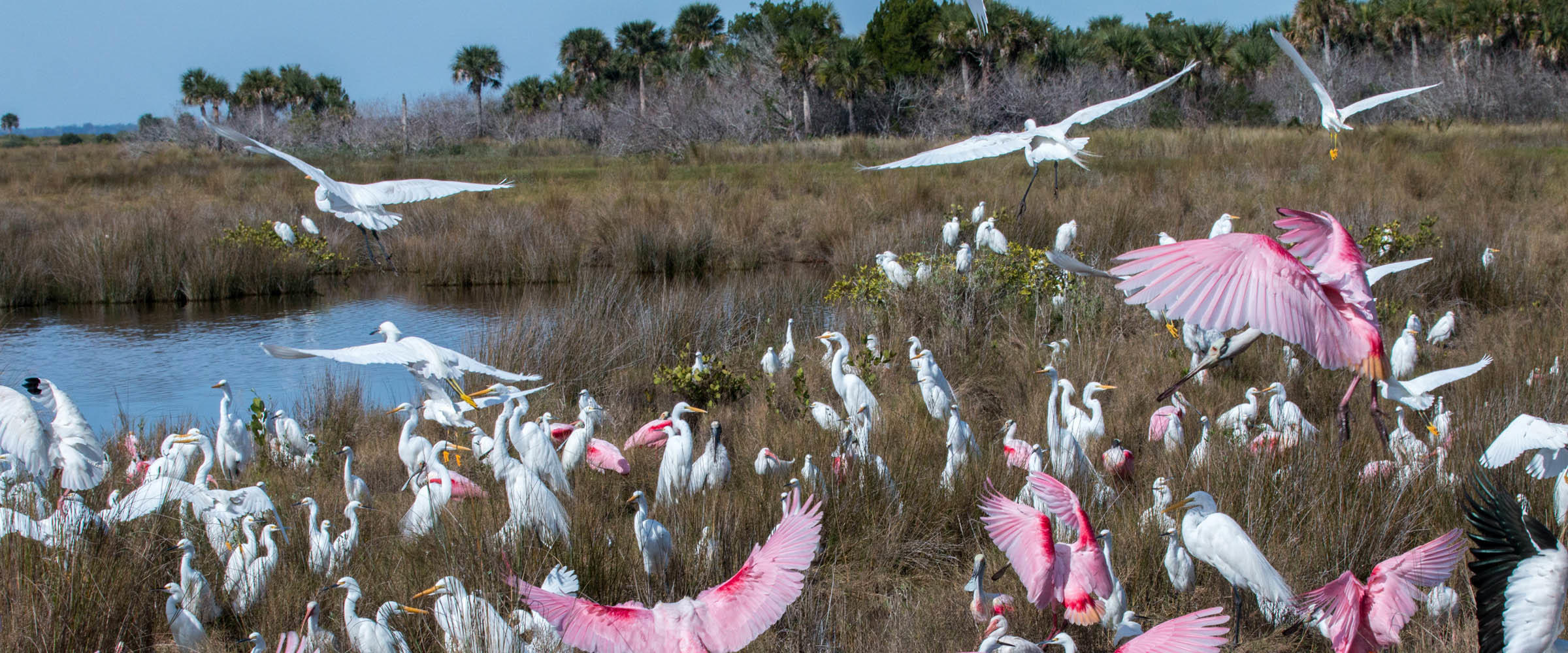Visitors to America’s Everglades in the 19th century frequently reported astonishment at the sheer numbers of wading birds they saw. John James Audubon wrote, “The flocks of birds that covered the shelly beaches, and those hovering overhead, so astonished us that we could for awhile scarcely believe our eyes.” That all changed when plume hunters decimated the iconic Florida birds in the 1880’s. At the turn of the century, with Audubon wardens to protect them and new laws like the 1918 Migratory Bird Treaty Act, the wading birds of America’s Everglades recovered quickly through the 1930’s and 1940’s.
Unfortunately, draining of the Everglades began in earnest shortly after the successful turnaround of wading birds. These canaries-in-the-mines for America’s Everglades, wading bird populations fell dramatically once again. By the 1970’s, reports of 50,000 birds were rare, and by the 1980’s reports of 20,000 birds were non-existent.
As water managers better understood environmental needs and restoration of America’s Everglades began, there was some recovery. Wading bird populations began to rise. In the 2000’s, the Everglades were averaging about 30,000 nesting wading birds with a peak of 126,000 wading birds in 2009. Although encouraging, most recent nesting occurred in the Central Everglades, far away from historic supercolony sites.
This past nesting season, however, pleasantly surprised biologists when more than 220,000 nesting birds were discovered throughout the Everglades! One supercolony had more than 100,000 nesting birds; the sight of which drove people to charter planes just to see the spectacle.
Audubon experts say restoration efforts are helping but that we must continue to fully restore the famed River of Grass. Recent strong numbers resulted are attributed to a rare combination of various factors, supported by restoration efforts, that made the Everglades unusually favorable for wading birds. Audubon scientists point to the water recession rate that concentrated prey across the landscape and through time plus massive rainfall from Hurricane Irma.
These awe-inspiring wading bird supercolonies of America’s Everglades tell us something we already knew: if we get the water right, the birds will come back in big ways.





